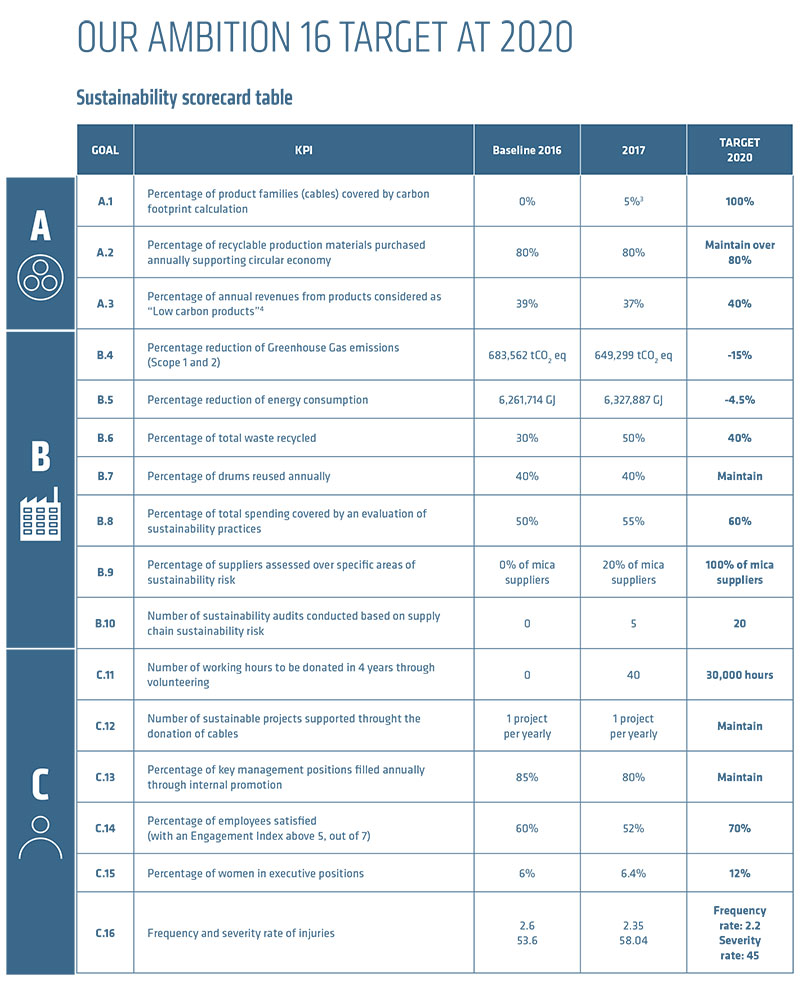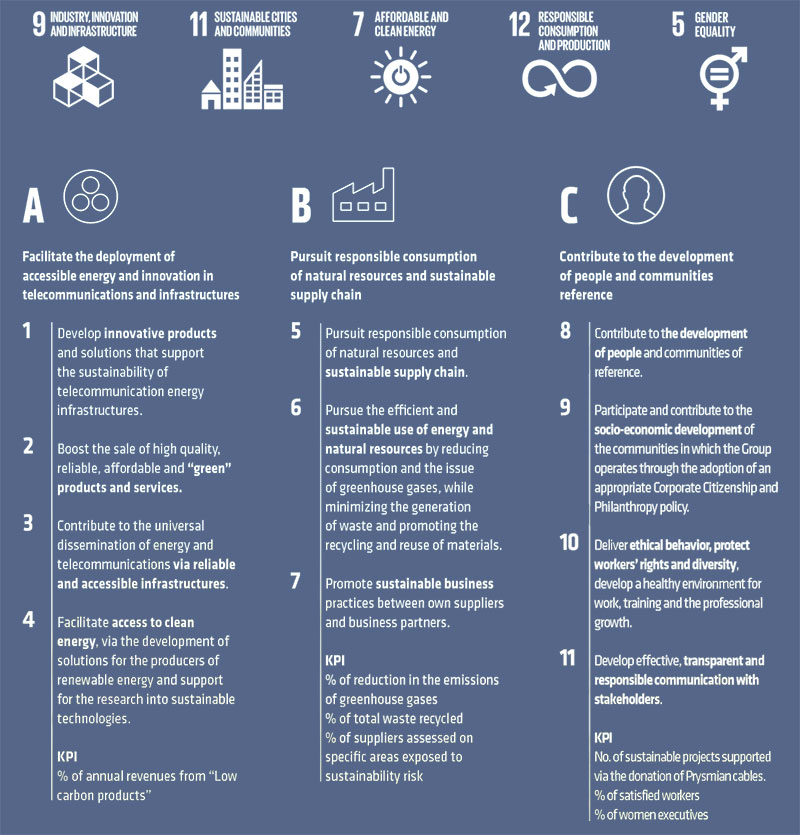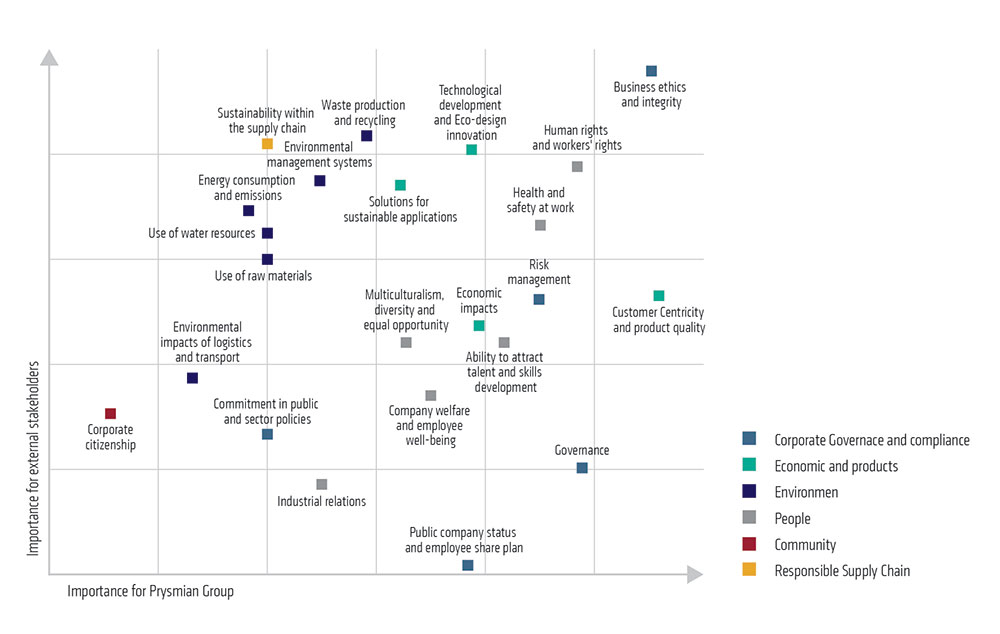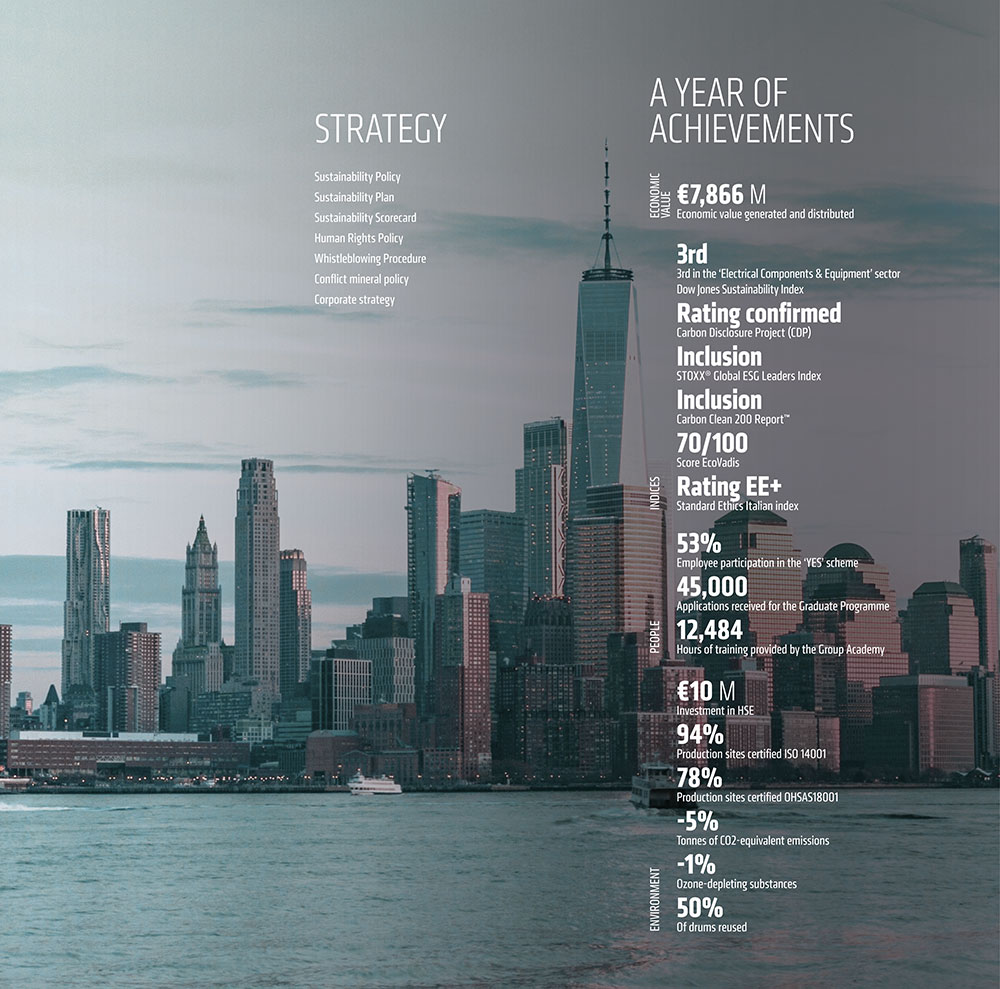Taking action
Taking Action
In 2017 Prysmian implemented a Sustainability Plan containing priorities, targets and actions to meet the 16 KPIs that will make up our scorecard by 2020.
Growing responsibly
“In 2017, Prysmian Group made further progress on its path of growth, both organically and along external lines: the more you grow, the more you have to act responsibly, in order to make your progress sustainable for all those involved”.
Group Corporate & Business Communications Director, Lorenzo Caruso, believes the commitment to a sustainable growth has to be implemented with specific actions aimed at reaching well-defined targets within a certain time frame. That is why the Group adopted a Sustainability Plan in 2017, consisting of priorities, objectives and concrete actions aimed at meeting the 16 quantitative KPIs that will make up the Group's scorecard by 2020.
“Furthermore,” Caruso explains, “You have to measure the progress you make in terms of sustainability objectively: in 2017 the Group consistently retained its position in the main international sustainability indices and assessments, including FTSE4Good, Dow Jones Sustainability Index and CDP.”
The identification and analysis of risks linked to environmental and social impacts are also a requirement in sustainable growth. In 2017, explains Caruso, after the Group identified sustainability risks to which it appeared to be exposed, “strategies and key activities were undertaken to mitigate these risks, which are constantly monitored by the company with a suitable management system.
Aligning stakeholders on shared goals
In 2017, Prysmian implemented a specific Sustainability Plan consisting of priorities, objectives and concrete actions aimed at meeting the 16 quantitative KPIs that make up the Group's Scorecard by 2020. As the identification and analysis of risks linked to environmental and social impacts has an increasingly important role within the Group, in 2017 some sustainability risks to which Prysmian appears to be consistently exposed through its business model were identified. Strategies and key activities were undertaken to mitigate them, which are constantly monitored by the company departments guaranteeing an adequate internal control and management system. The Group has set a clear sustainability strategy inspired by the universally recognised United Nations Sustainable Development Goals. The Group path towards sustainability was aligned with the expectations of stakeholders, through the sharing of activities and objectives with customers, suppliers, institutions and communities, within the same major project in which integrity and responsibility play the main role.



Analysing materiality, in even greater depth
In 2017, Prysmian Group further extended and refined its materiality analysis, which was created in accordance with the Global Reporting Initiative’s ‘G4 Sustainability Reporting Guidelines’.
The analysis makes it possible to identify sustainability issues that have significant impact both for the Group and its stakeholders, in economic, environmental and social terms. It also maps the new needs and requirements of stakeholders in relation to the sustainability strategy and the Group's risk management process.
The materiality analysis process followed by Prysmian Group involves four phases: stakeholder mapping and identification of relevant sustainability issues; prioritisation of the issues based on the evaluation of their relevance for the Group and stakeholders; elaboration of the materiality matrix. To gain an updated and integrated overview of the global and industry context, an additional documentary analysis of external sources was carried out in 2017, which identified the main sector trends and any relevant emerging issues.
The analysis highlighted new issues that will be subject to stakeholder assessment during 2018, particularly concerning cyber security, anti-corruption, innovation of products and services for climate change, and access to energy. A specific materiality matrix was then widened to provide an aggregated view of the current and potential relevance of the issues. Within the matrix some themes were aggregated under six topics: energy consumption and emissions; ability to attract talent; business ethics and integrity; technological development and eco-design innovation; human and workers’ rights; health and safety at work.
Compared to 2016, the assessed importance of energy consumption and emissions, sustainability within the supply chain and human and workers’ rights increased.
Materiality matrix
The Prysmian materiality matrix was elaborated upon to provide an aggregated view of the relevance of the issues for the Group, in terms of current and potential impact, on the Group's ability to create long-term value, and for its stakeholders, in terms of the influence that each issue has on their decision-making processes.


The importance of good governance
The importance of good corporate governance that achieves strategic objectives and creates sustainable value over the long term is a well-established guideline and strategy at Prysmian.
Prysmian Group’s governance system is aligned with the relevant recommendations and regulations, and complies with domestic and international best practices. The Group has also adopted principles, rules and procedures that govern and guide the activities of all organisational and operational units, while ensuring all operations are carried out in an effective and transparent manner.
In 2017, The Group undertook various initiatives aimed at implementing the recommendations indicated in the Code of Self-Regulation. Prior to this, on January 1, 2016, the Board of Directors entrusted the task of overseeing the related sustainability issues linked to the Group's activities to all the stakeholders in the Compensation and Appointments Committee (which has now become the Compensation, Appointments and Sustainability Committee).
The committee is responsible for monitoring the company's positioning on the main sustainability indices, providing advice on the key initiatives being developed, and approving the annual sustainability report.

Want to find out more?
Letter to Stakeholders (pdf)
The Group’s sustainability strategy (pdf)
The Group’s sustainability policies (pdf)
Governance of sustainability (pdf)
Group risk management system (pdf)
Materiality analysis (pdf)
Environmental responsibility (pdf)
International awards and recognition
A year of sustainability (pdf)
